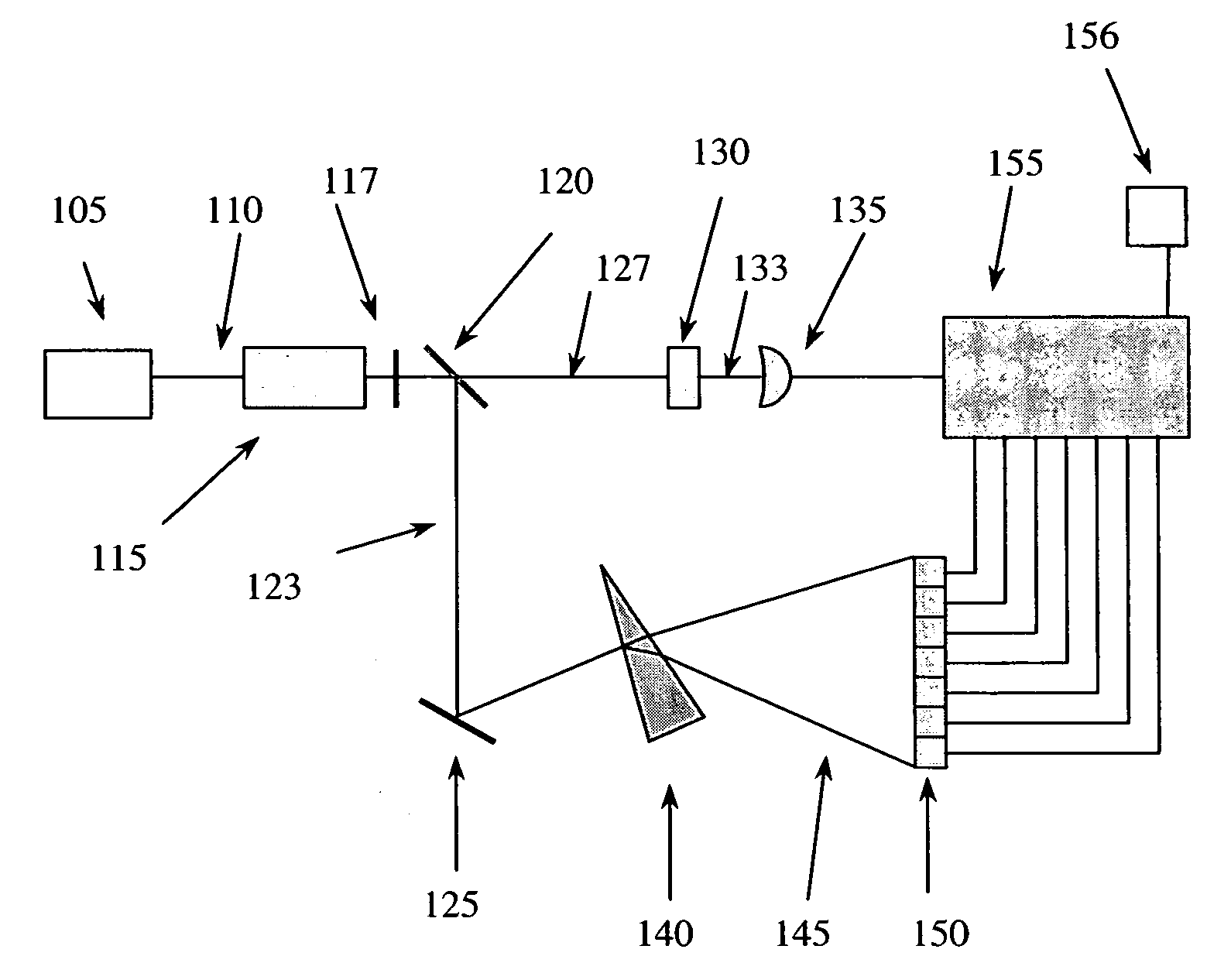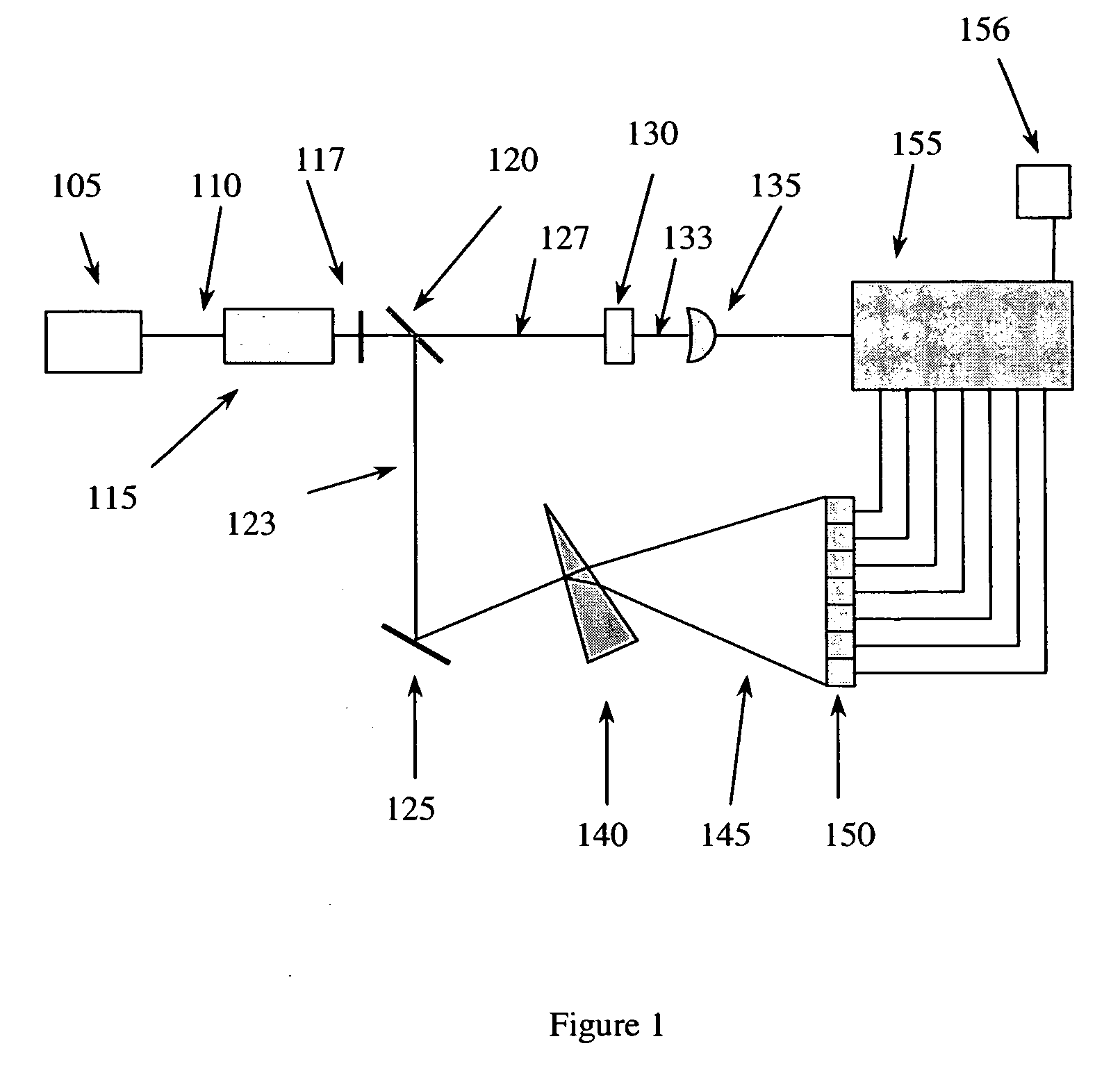Entangled photon fourier transform spectroscopy
a fourier transform and entangled photon technology, applied in the field of spectroscopy, can solve the problems of limited frequency information range of existing spectrometers, limited performance and sensitivity, and difficult access to far-ir and thz frequency bands with conventional absorption spectroscopy, and achieve high resolution
- Summary
- Abstract
- Description
- Claims
- Application Information
AI Technical Summary
Benefits of technology
Problems solved by technology
Method used
Image
Examples
Embodiment Construction
[0032] The particulars shown herein are by way of example and for purposes of illustrative discussion of the embodiments of the present invention only and are presented in the cause of providing what is believed to be the most useful and readily understood description of the principles and conceptual aspects of the present invention. In this regard, the description taken with the drawings provides a fundamental understanding of the present invention, making apparent to those skilled in the art how the several forms of the present invention may be embodied in practice.
[0033]FIG. 1 is a schematic diagram of an entangled-photon absorption spectrometer embodiment. Pump beam 110 from laser 105 is directed to a nonlinear crystal 115 with a high second-order susceptibility, such as BBO (β-BaB2O4), to produce entangled-photon pairs via parametric downconversion. Filter 117 blocks remaining pump beam photons that may have passed through nonlinear crystal 115. The entangled-photon pairs are ...
PUM
| Property | Measurement | Unit |
|---|---|---|
| spectroscopic information | aaaaa | aaaaa |
| frequency | aaaaa | aaaaa |
| quantum efficiency | aaaaa | aaaaa |
Abstract
Description
Claims
Application Information
 Login to View More
Login to View More - R&D
- Intellectual Property
- Life Sciences
- Materials
- Tech Scout
- Unparalleled Data Quality
- Higher Quality Content
- 60% Fewer Hallucinations
Browse by: Latest US Patents, China's latest patents, Technical Efficacy Thesaurus, Application Domain, Technology Topic, Popular Technical Reports.
© 2025 PatSnap. All rights reserved.Legal|Privacy policy|Modern Slavery Act Transparency Statement|Sitemap|About US| Contact US: help@patsnap.com



